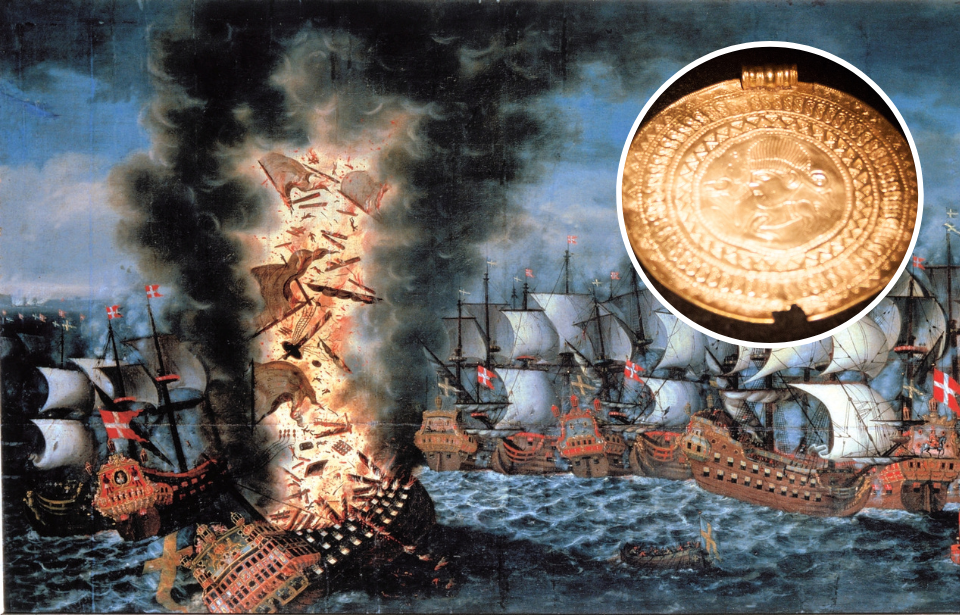Built in 1672, Kronan was Sweden’s largest and best-equipped ship. She was 53 meters long from stem post to stern post and provided the Swedish Navy with ample protection and military might. However, a stroke of bad weather led to the ship’s sinking, and she sat under the sea for more than 300 years. Archaeologists have since rediscovered Kronan and they’ve been bringing tens of thousands of artifacts to the surface – including one with a peculiar smell.
Kronan was a magnificent but short-lived vessel
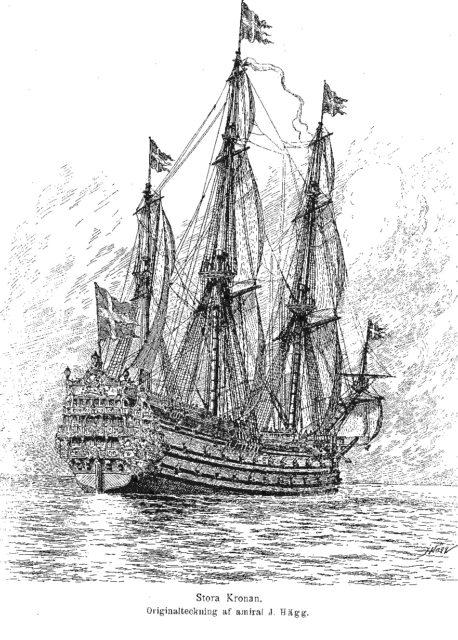
After she was completed in 1672, Kronan was one of the largest and most heavily armed ships of any navy in the world. She set sail on the Baltic Sea and brought multiple victories to the Swedes.
Kronan was outfitted with over 110 gun cannons and had three full gundecks. The ship was designed with Swedish societal hierarchies in mind. Richer, higher-ranking officers occupied the upper decks, while poorer sailors were confined to the lower decks.
It took four years to build this great vessel and she was only operational for four years before sinking. On June 1, 1676, during the Battle of Öland, Kronan tried to make a sharp turn to face the fleets of its enemies, Denmark and the Netherlands. Unfortunately, the ship fell onto its side after turning with too much sail. The store of gunpowder ignited and blew off most of the bow, and Kronan rapidly sank to the bottom of the Baltic Sea.
Archaeologists found the impressive weapon collection first
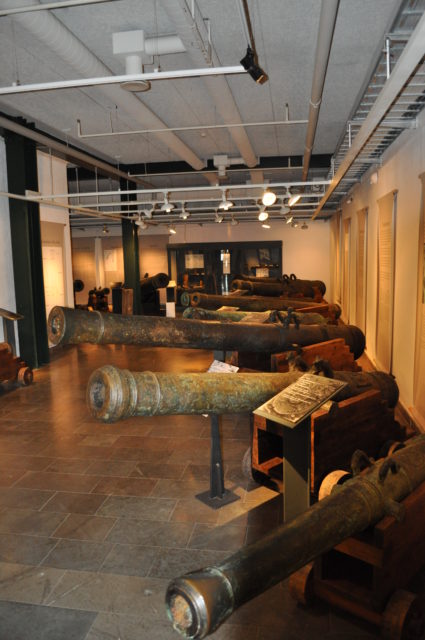
More than 300 years later, when archaeologists discovered and first began excavating the wreckage in 1980, one of the first things they noticed was the plethora of gun cannons that were immediately visible from outside the ship. They began to pull some of the smaller cannons to the surface but needed the assistance of the Swedish Coast Guard to help raise some of the larger ones that weighed over four tons.
What was notable about the cannons was that they were of all different shapes and sizes, built from different materials, and visually different from one another. Archaeologists have understood these cannons to serve as trophies and weapons from different kingdoms that Sweden fought. These included cannons from Germany, France, and Spain.
Brain tissue was preserved in the wreck
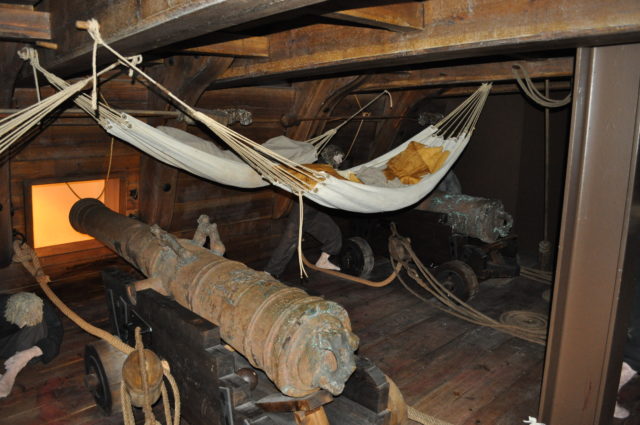
When Kronan sank, approximately 800 men perished at sea. It is estimated that only about 40 sailors were lucky enough to survive the disaster. As excavators explored the wreckage beneath the sea, they found the remains of two sailors who had been aboard the ship.
One of the more remarkable artifacts found among Kronan’s wreckage actually came from one of those sets of remains. The 300-year-old skull of a sailor was found to still have some brain tissue held safely inside it. The skull had become stuck in an “air-free pocket” which helped preserve both the bone and the tissue inside.
The ship was full of treasure
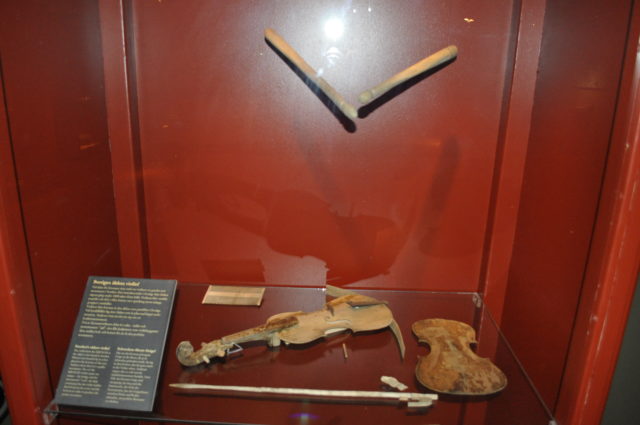
In addition to these amazing artifacts were many, many others, amounting to over 30,000 items. Two war chests were discovered in the wreck, each stuffed with money. The first was filled with silver coins, and the second with 255 gold coins with origins from all over the world.
Additionally, various musical instruments were found among the wreckage, giving us a glimpse of the types of hobbies the sailors held onboard Kronan. The archaeologists also found bundled tobacco leaves, likely from North America, for the sailors’ smoking habits. Personal items, clothes, medical instruments and medicine, and even a diamond ring were also found during the excavation.
A bit of cheese lasted all these years
Researchers uncovered ancient cheese in a shipwreck. I'd be wary of that dairy https://t.co/E0BDkNdyad pic.twitter.com/5Lv90Pl2RZ
— Smithsonian Magazine (@SmithsonianMag) July 28, 2016
One of the more recent discoveries that archaeologists made also happened to be one of the strangest they made. A small jar was found in the sand near the wreckage and was brought to the surface. As a result of the pressure change, whatever was inside the jar had begun to ooze out from the lid. That was when the archaeologists were hit with a putrid smell.
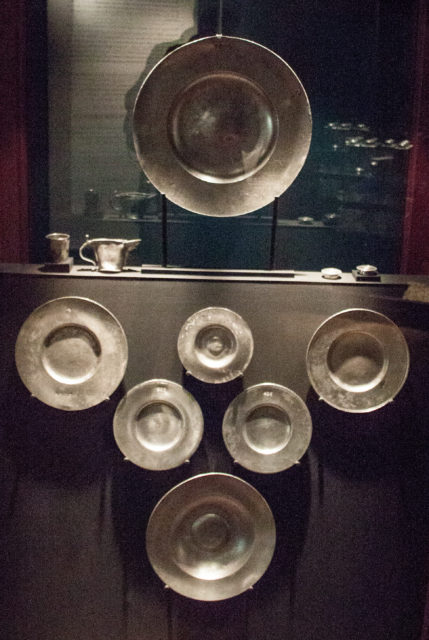
Inside the jar is what scientists believe to be a type of cheese. “It’s a pretty good guess that it’s some kind of dairy product, and we think it is cheese,” said archaeologist Lars Einarsson, the man responsible for the excavation of Kronan’s wreckage. “It looks a bit like some kind of granular Roquefort cheese. It’s been in the mud, so it’s reasonably well preserved, but at the same time it has been at the bottom of the sea for 340 years.”
More from us: Eerie Nautical Discoveries Underneath the Golden Gate Bridge
Now, the jar and its cheesy contents are being preserved at low temperatures to help slow down the deterioration process, and scientists are hard at work trying to determine exactly what the cheese was made from.
